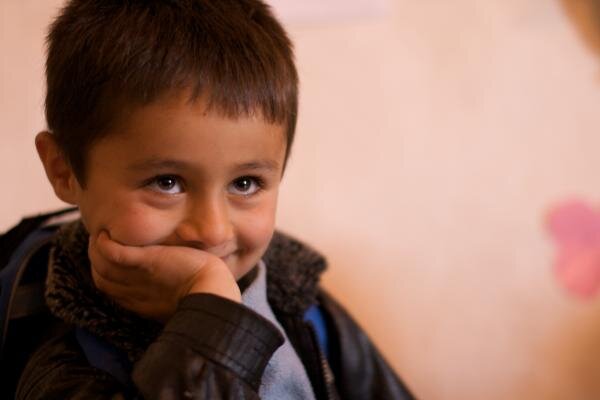Reimagining a better future for every child

TEHRAN – November 20th is an important date as it is the date in 1959 when the UN General Assembly adopted the Declaration of the Rights of the Child. It is also the date in 1989 when the UN General Assembly adopted the Convention on the Rights of the Child.
World Children's Day offers each of us an inspirational entry-point to advocate, promote, and celebrate children's rights, translating into dialogues and actions that will build a better world for children.
This year, the COVID-19 crisis has resulted in a child rights crisis. The costs of the pandemic for children are immediate and, if unaddressed, may last a lifetime.
Children population in a declining trend
As a proportion of the nation's total population, children have accounted for a dwindling share since the Iranian calendar year 1395 (March 2016-March 2017) due to a falling fertility rate.
There are about 7 million children aging four years or younger and about 6.4 million children aging 5-10 years in the country, Shahla Kazemipour is a demographer told ISNA on Friday.
The reason for the higher number of children aged four or younger than children aged 5-10 is the reduced age of marriage in the 1360s (falling on 1980s), she stated.
She went on to say that the total number of children under the age of 10 is about 13.5 million, equivalent to 17 percent of the total population of the country, with boy's population of 51 percent, equivalent to 6.9 million, while the population of girls is about 49 percent, equivalent to 6.6 million.
However, the country is facing a decline in the population of children over the past few years, she highlighted.
2% of children are out of school
According to Kazemipour, about 5 million of the total population of children are studying in primary school, and about 2 percent are deprived of primary education for various reasons, such as living in impassable areas, absolute poverty, etc.
On the other hand, not all of the children in school have access to sufficient facilities, and as a result, they experience a decline in the quality of education, she said.
Despite the general education law that all children are expected to be able to complete their education by the end of junior high school, there are still about 500,000 illiterate children in the country.
Child nutrition calls for more attention
Elsewhere in her remarks, Kazemipour pointed out the importance of child nutrition and lamented "On the other hand, there is a lack of attention to the health test of height, weight, nutrition of children aging one to five years old, which needs to be done once a year."
However, a young, healthy and growing population requires more attention to children, she concluded.
Fertility drops to lowest rate in 8 years
According to the data recently published by the Statistics Center, the fertility rate in Iran has been declining over the past eight years, the lowest of which was related to the past [Iranian calendar] year (March 2019- March 2020) with the birth rate of 1.2.
The fertility rate of the country has experienced ups and downs over the past eight years; during the first half of the 1390s (2010s), the rate slightly raises from 1.75 to 2.07. However, it drops to a record low of 1.8 over the last [Iranian calendar] year.
According to the data released by the National Organization for Civil Registration, the number of births registered during the [Iranian calendar] year 1390 (March 2011-March 2012) was equal to 1,382,118, which increased to 1,528,053 births in the [Iranian calendar] year 1395 (March 2016-March 2017).
However, the number of births in the whole country faced a downtrend over the past three years, as registered births decreased to 1,196,135 over the past [Iranian calendar] year; a difference of roughly over 120,000 to 16,000 per year.
Moreover, the age pattern of fertility shows a decrease in total fertility at all ages, including the age groups of 20-24, 25-29 and 30-34 years in the last year; indicating fertility downward among young people, which in turn has played a significant role in reducing the total rate.
Population decline comes up with consequences, including the reduction of the working population (aged 15 to 64) and the aging population in the coming decades.
Several socio-economic factors led to fertility rate decrease and reproductive behavior in the country, including financial issues, urbanization, education, first marriage age, as well as increased access to family planning services along with increased time gap between the firstborn and marriage.
Mohammad Jalal Abbasi, a demographic expert and head of the Population Association, said that usually when society is facing economic shocks and psychological crises, as in the current situation of a global pandemic, marriages and childbearing are even more affected due to fears of a vague future.
FB/MG
